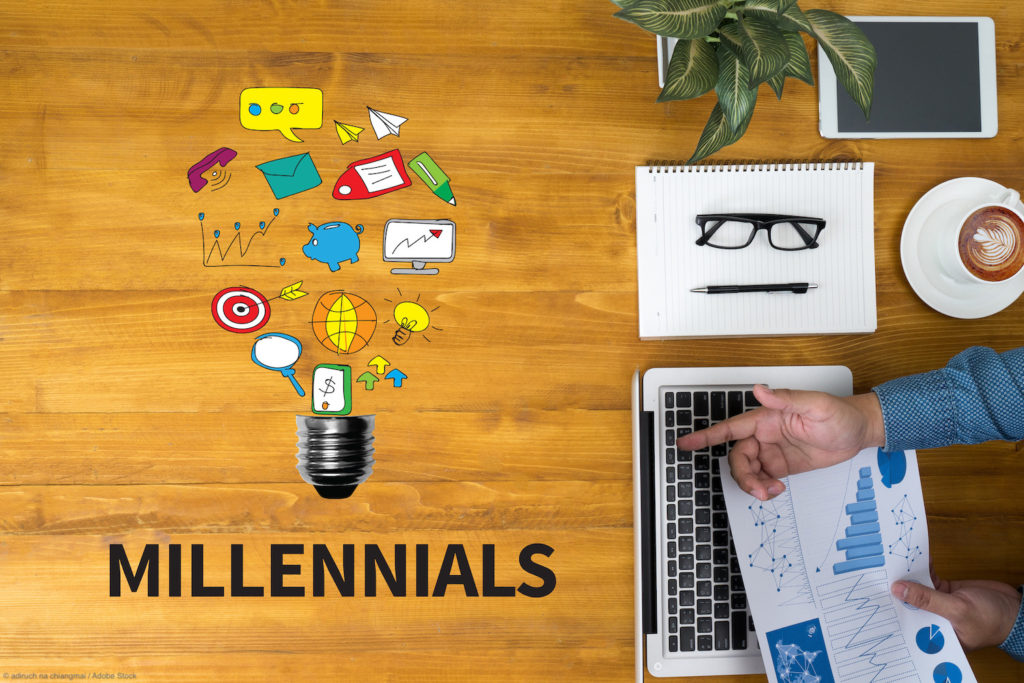There’s a reason Millennials are nicknamed the “Selfie Generation” and the “Always-On Generation.” They’re by far the most digitally connected group our nation has ever experienced. Millennials have grown up with cell phones and tablets practically attached to their hands, and they spend much more time online than older groups—some might say to a fault.
Who are they? Although the exact age range varies depending on the source, according to Pew Research, people born between 1981 and 1996 (ages 23 to 38 in 2019) are considered Millennials. There’s also 73 million of them, making them the largest adult generation in the United States.
As marketers, we need to ensure that our strategies and tactics engage this massive generation. It’s important to know their purchasing patterns and what digital platforms, marketing tactics, and brand characteristics appeal to them most.
And, in case you were wondering, this doesn’t just apply to B2C marketing. B2B companies must also appeal to this group. Older Millennials are moving up into decision-making roles in companies across all industries. And, as our workforce ages, organizations of all types will need to recruit more Millennials to fill jobs.
Companies that want to keep their profits high as older Americans ride off into the sunset need to understand what makes Millennials tick. Here are four things marketers need to know about reaching and engaging with this generation:
1. They expect an optimized digital experience
Millennials consume digital content across multiple mobile devices, with smartphones being their top choice. Ninety-two percent own smartphones, compared to 85 percent of Gen Xers and 67 percent of Baby Boomers. Regardless of device type, Millennials surf, connect with others, view videos, and stream other content—much, much more than they watch television. They also expect an optimized experience, so digital marketers need to ensure that their websites and advertisements are optimized for all forms of displays.
2. Their purchasing decisions are informed by what others say
Millennials rely heavily on the opinions of others, including social media influencers, when making purchasing decisions. Forty percent, in fact, said they refer to online reviews and testimonials before purchasing a product. Millennials are also much more likely to talk about your business or product online, which is why it is increasingly important for companies to have social media managers who are well-trained in online interactions with customers. Knowing the right way to respond to both good and bad commentary in public forums can help keep your brand reputation intact.
3. Facebook still rules, but other platforms are gaining ground
Millennials are the most likely to use social media daily, with 62 percent also reporting that brand engagement on social media is more likely to make them a loyal customer. Facebook is still the most popular social channel, although YouTube and Instagram are growing rapidly in popularity, especially among younger Millennials. If they’re not doing it already, companies should use a range of social platforms to share content, engage with customers, and build awareness. This Demand Gen Report article gives five examples of B2B businesses that are using social media effectively.
4. Building brand authenticity is hard to do, but is increasingly important
Most of all, Millennials are looking for authenticity in the brands they choose. They have grown up as tech-savvy consumers in an increasingly cynical world and are quickly turned off by claims they believe to be false or hollow. They also want to feel like companies are about more than profitability, which is why efforts that support a social good can enrich and deepen a brand’s reputation.
Millennials want to have a personal experience with your company, so finding a way to deliver that, whether through social engagement, customer service, or conscious endeavors, will go a long way.
B2B marketers can often lose sight of the fact that their audiences—other businesses—are comprised of people, and those people are becoming increasingly diverse. As Baby Boomers exit, Millennials are rising in our workforce so it’s important that we understand their behaviors and preferences in order to keep our marketing fresh and relevant.
The Millennials are already here, and their buying power is growing. The question is, are you reaching them?

